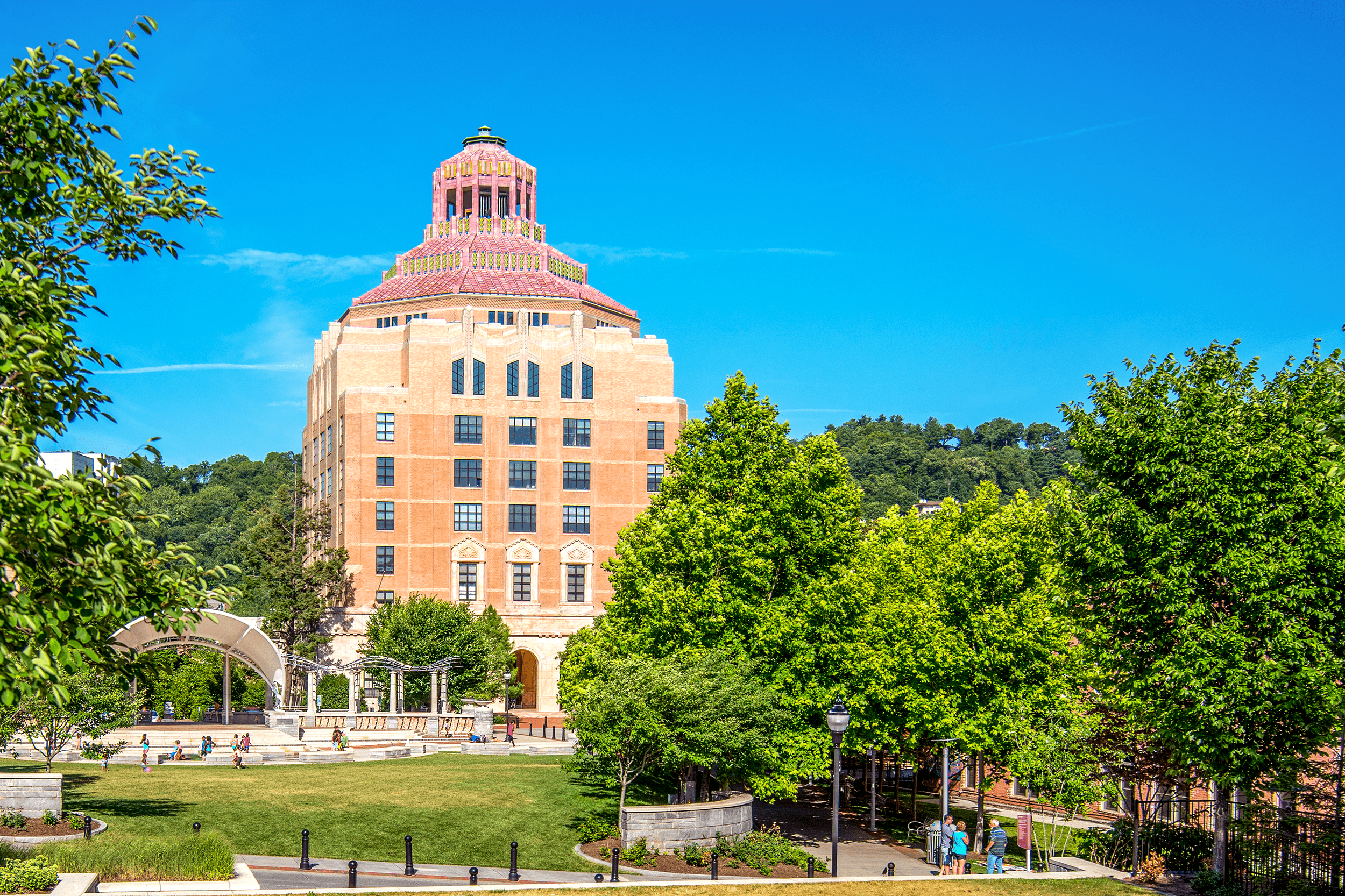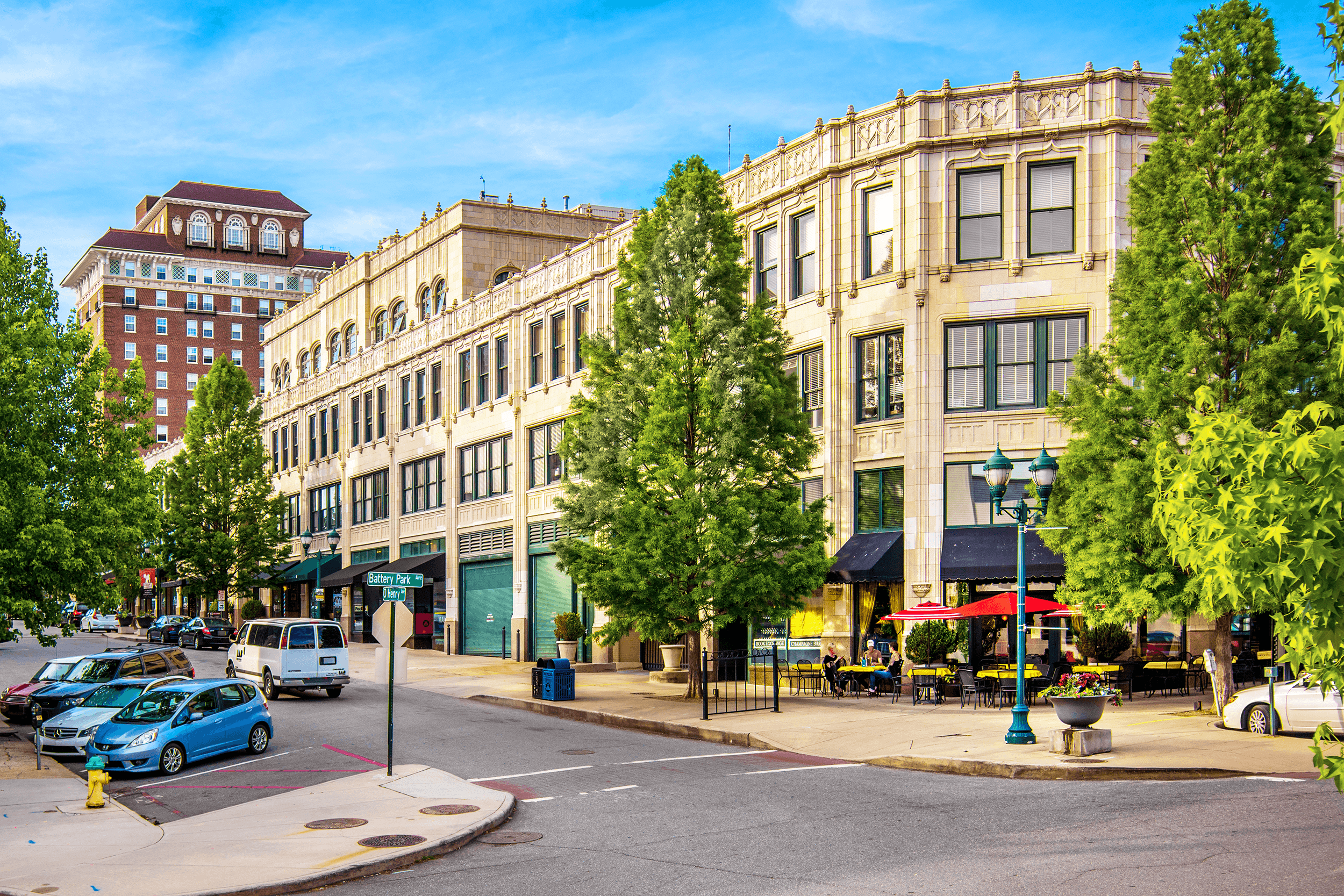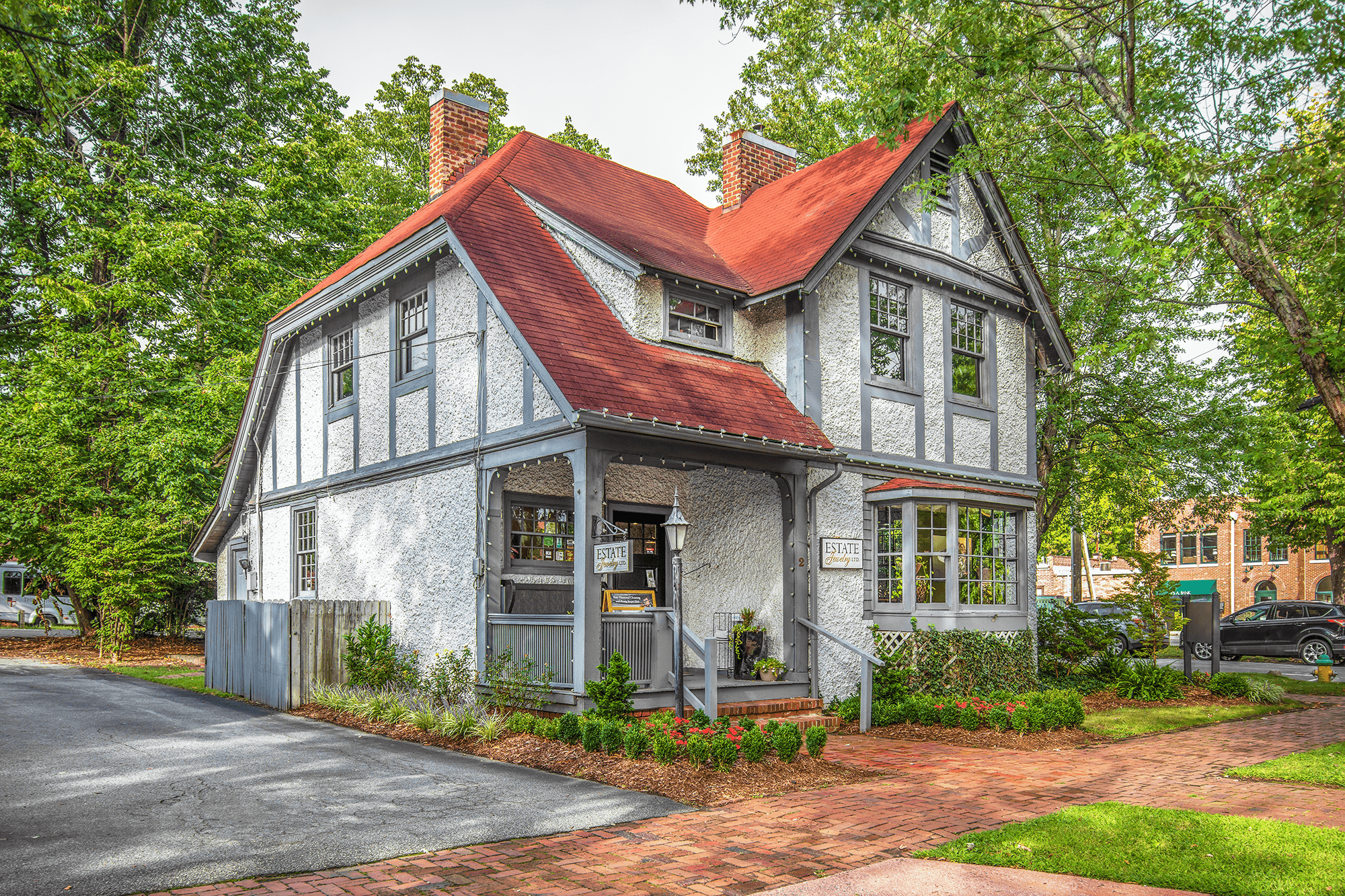Historic Biltmore Hardware Building

Updated: April 2019
A Significant Architectural Landmark of the 1920s
After George Vanderbilt’s untimely death in 1914 and the devastating flood of 1916, Edith Vanderbilt and the trustees of George Vanderbilt’s estate sought the counsel of Judge Junius G. Adams to explore options on how to best proceed with the estate. Part of Judge Adams’ proposal was to sell Biltmore Village.
Due to World War I, plans to sell were only executed on April 1, 1920, when all of Biltmore Village except for The Cathedral of All Souls, Parish House, the Clarence Barker Memorial Hospital, and the Historic Southern Railway Depot was sold to the Appalachian Realty Company, whose president George Stephens (1873-1946) was. Stephens also co-owned the newspaper Asheville Citizen and later became the first chairman of the Asheville City Planning Commission.
Over time, his company sold these properties to a few already committed re-purchasers, such as Plaza Realty Company and other individual investors.
Although the Vanderbilt family tried to impose design restrictions to the future development of the village, they were mostly unsuccessful, and later designs did not follow the original architectural theme of pebble-dash walls and half-timbering.
Historic Biltmore Village
Tenants and Owners of the Biltmore Hardware Building
Joseph Cole bought the land from Plaza Realty Company in October 1921 and constructed the Biltmore Hardware Building in 1923 as a rental property.
It was part of a broader trend toward more extensive commercial development in the village. Around the same time, the Historic Biltmore Oteen Bank Building (1925-1930) and the Historic McGeachy Building (1928) were built.
The first tenants of the Biltmore Hardware Building, who occupied the first floor, were the Gaston-Biddix Company, a dry goods wholesaler, and E. H. Gaston, a lumber wholesaler. The Biltmore Inn operated a boarding house on the second floor.
In 1927, a one-story wing was added, which expanded the storefronts from three to four.
In 1930, the Piggly Wiggly Grocery occupied the building, followed by other stores during the Great Depression years.
When the Great Depression began, Joseph Cole took a mortgage on the building. In 1935 he lost the building to foreclosure. Grover Crawford, one of his initial trustees, bought it.
As Grover Crawford already owned the 1927 one-story wing adjacent to the Biltmore Hardware Building, he may be “responsible for the cut-through on the north wall to connect the two buildings, creating one building as it exists today” as suggested by the National Register of Historic Places.
In 1936, the Biltmore Hardware Company opened its store in the building, first renting the space and then purchasing it from Crawford in 1962. The Biltmore Hardware Company remained in the building until 2000, when it went out of business.
Today, the building is home to Rezaz, a Mediterranean restaurant and wine bar.
Architecture
The National Register of Historic Places describes the architecture of the Biltmore Hardware Building as “an excellent example of an early 1920s Commercial Style building. The two-story brick building [has] planar wall surfaces ornamented simply by brick patterning and masonry texturing. The arched central door opening and brick parapet and tile pent roofs are the building’s only decoration.”
It further states that the storefronts are original, “both in configuration and materials”, as well as the pent tile roof on the front and all windows. Also, the “second-floor plan is intact, and it retains its original architectural materials.”
The National Register of Historic Places concludes in its nomination documents that the Historic Biltmore Hardware Building, the Historic McGeachy Building and the Historic Biltmore Oteen Bank Building “are the three most significant commercial architectural landmarks built in Biltmore Village in the 1920s”.
28 Hendersonville Road, Asheville, NC 28803
All day.
All year.
STREET VIEWING ONLY.
Free street parking.
Public bus stop: Lodge Street at Biltmore Ave.
Stop Gray Line Historic Trolley: 5 Boston Way (at the store Olde World Christmas Shoppe)










